We are excited to be able to finally share information about the current trial we are undertaking in conjunction with City of Boroondara Council. We are testing whether recycled glass sand can be used as a growing medium for natural turf Fields of Play. If successful, the trial may potentially open up the opportunity to develop natural turf ovals and pitches with a fully recycled product, reducing potential waste to landfill and reducing the need to quarry virgin materials.
The initial enquiries with glass recycling companies identified a product that had comparable physical properties and characteristics as conventional USGA specified sands. Side-by-side the two materials visually appeared different, with the recycled glass sand having a shimmer through it.
 Figure 1 - Recycled glass sand (left) and convention sand (right).
Figure 1 - Recycled glass sand (left) and convention sand (right).
A suitable site was identified with City of Boroondara and 6m x 6m plot was excavated and framed to create three zones.
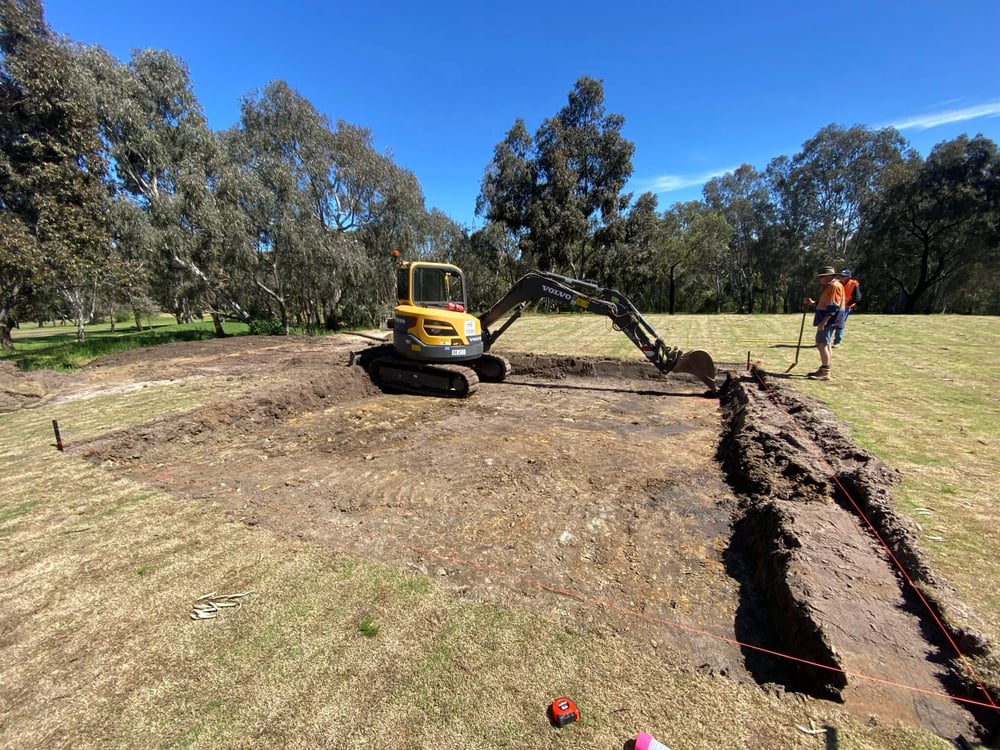 Figure 2 - Plot excavation at the City of Boroondara.
Figure 2 - Plot excavation at the City of Boroondara.
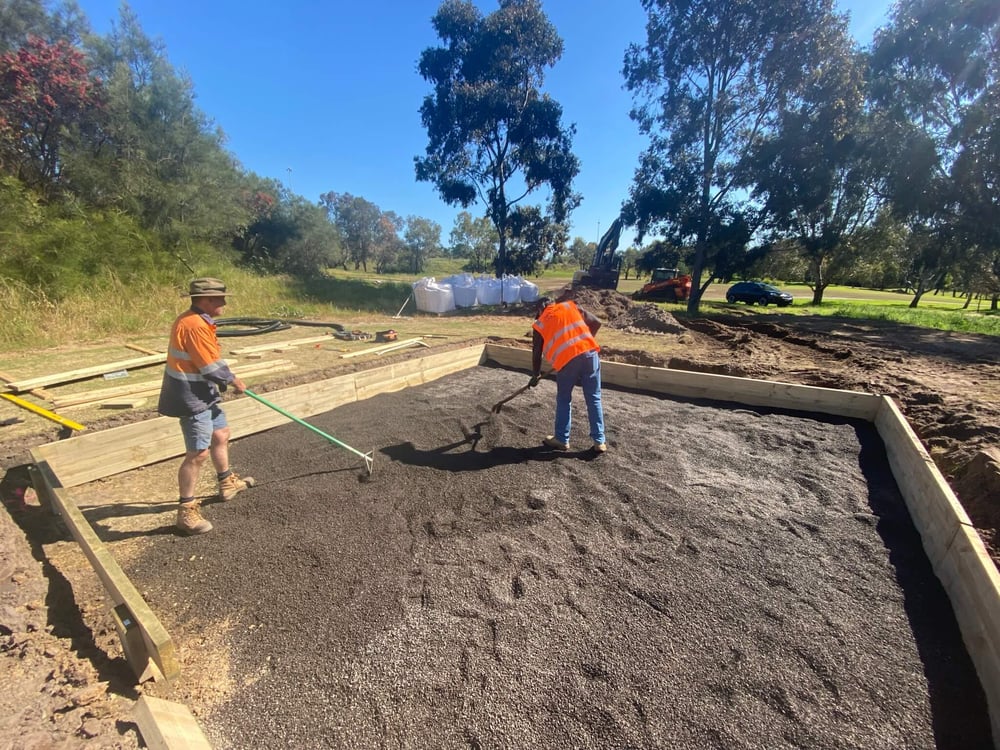 Figure 3 - Framing the plot.
Figure 3 - Framing the plot.
The constructed trial consists of three different profiles, each with a 300mm thick growing medium overlying a drainage gravel layer:
- Trial plot 1: conventional quarried rootzone sand
- Trial plot 2: recycled glass sand
- Trial plot 3: 50/50 blend of conventional quarried rootzone sand and recycled glass sand
 Figure 4 - Filling up the plot with three different growing medium profile.
Figure 4 - Filling up the plot with three different growing medium profile.
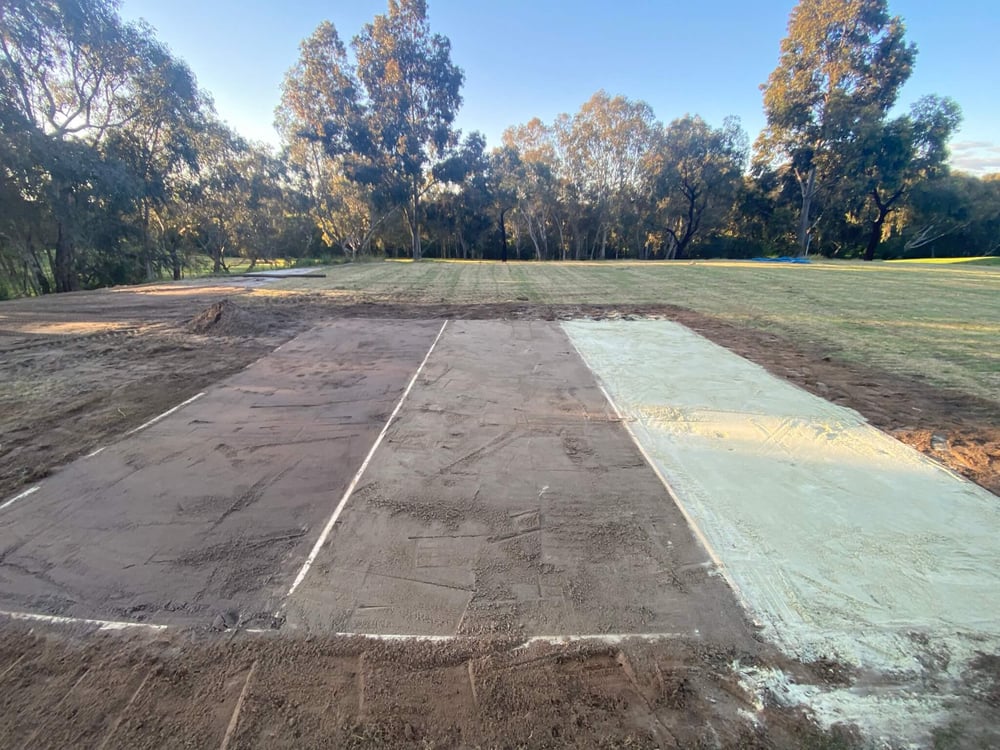 Figure 5 - The three trial plots being completed and ready to be covered with natural turf.
Figure 5 - The three trial plots being completed and ready to be covered with natural turf.
Post the initial construction and prior to the turf being laid, thanks to Melbourne’s wetter than usual Spring, we have already been able to see that all three profiles drain adequately in a heavy rain event. Subsequent on-going testing will be used to monitor the moisture content of each plot.
In addition to the trial of the recycled glass sand we have also been fortunate enough to obtain some Tahoma 31 (hybrid bermudagrass) from Evergreen Turf to trial. The turf is said to have a high level of drought resistance, shorter winter dormancy and durability.
 Figure 6 - The trial plots covered with natural turf and hybrid bermudagrass in November 2021.
Figure 6 - The trial plots covered with natural turf and hybrid bermudagrass in November 2021.
 Figure 7 - Irrigating the natural turf and growing medium profiles underneath.
Figure 7 - Irrigating the natural turf and growing medium profiles underneath.
Once the turf was established, we have started to monitor and conduct testing on the profile to determine whether it is a sustainable alternative to quarried sands for the use in the construction of natural turf field.
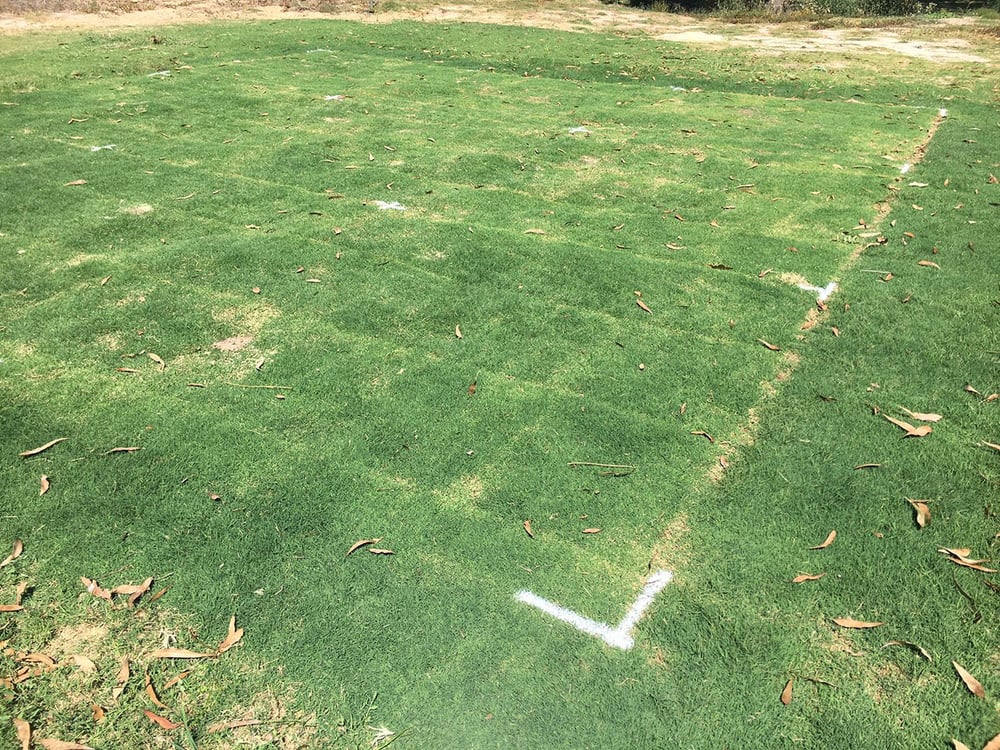 Figure 8 - The trial plots covered with natural turf and hybrid bermudagrass in April 2022.
Figure 8 - The trial plots covered with natural turf and hybrid bermudagrass in April 2022.
“We’ve seen some interesting results so far. Much of the glass comes from recycled drinking containers so there seems to be higher sodium levels from the manufacturing process for that sort of glass,” says Jarrod Hill, CEO at SPORTENG.
“The additional sodium has added to higher alkalinity levels in the 100 per cent recycled mix, and that’s slightly reduced the turf grass root growth. However, the fifty-fifty mix is showing almost no difference to the control group across our test parameters.”

Figure 9 - Measurement of the roots grass within the sand profile.
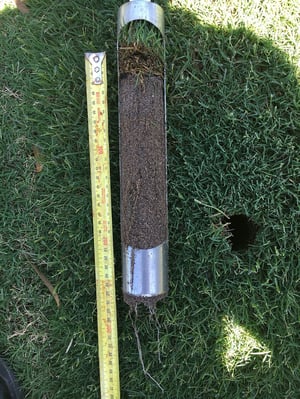
Figure 10 - Measurement of the roots grass within the mixed sand-glass profile.
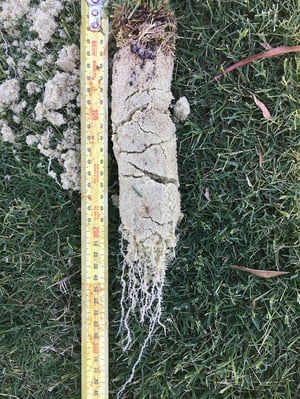
Figure 11 - Measurement of the roots grass within the glass profile.
While the trial is still ongoing, the team are exploring ways to get the pH levels within a more suitable range. There is a lot more work to be done before recycled sand becomes a commercial option, but Jarrod Hill is optimistic.
“We don’t have all the answers just yet, but that’s the best thing about being an engineer, we keep working towards them,” he says.
“By looking at touchpoints across our projects, we can find alternative sources and more sustainable options both for the materials we use and for how we operate. We’ll continue to innovate and find better ways to develop playing fields – it’s what our clients are looking for, and what we’re dedicated to doing.”
SPORTENG is happy to share some of the early findings, and discuss the opportunities and challenges of using recycled glass sand as a growth medium with other engineers and interested parties: contact us now!
Follow us to receive further updates on this exciting trial!

